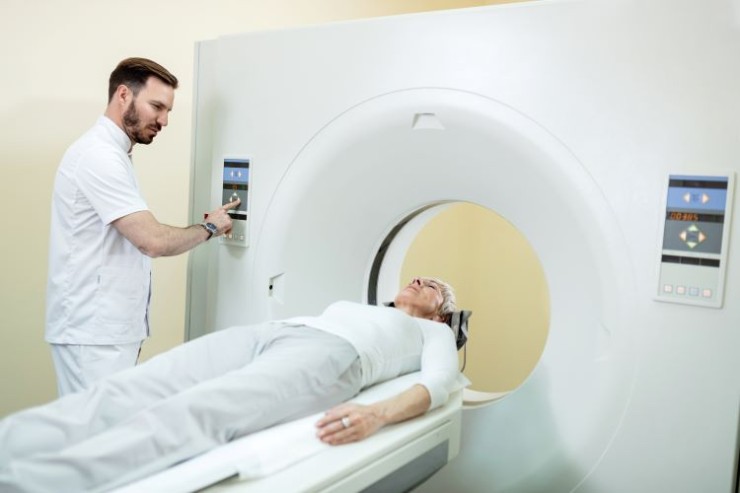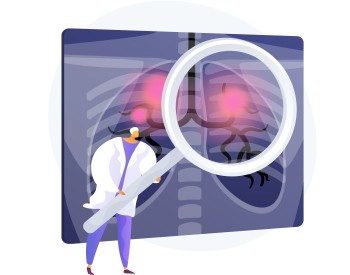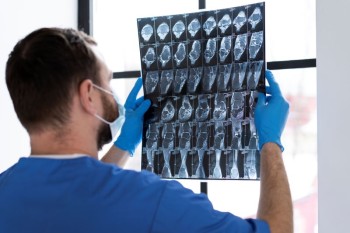
CT Abdomen & Pelvis with Contrast is crucial for evaluating the organs, blood vessels, and tissues in the abdominal and pelvic areas.
CT Abdomen & Pelvis with Contrast in India with Cost
CT Abdomen & Pelvis
with Contrast in Detail
Introduction
CT Abdomen & Pelvis with Contrast is a diagnostic imaging procedure that provides detailed cross-sectional images of the abdominal and pelvic regions. In this article, we explore the specifics of this imaging technique, its purposes, and how it aids in diagnosing and managing various abdominal and pelvic conditions.
Purpose and Importance of CT Abdomen and Pelvis with Contrast
CT Abdomen & Pelvis with Contrast is crucial for evaluating the organs, blood vessels, and tissues in the abdominal and pelvic areas. The contrast material enhances the visibility of structures, allowing for a more detailed and comprehensive assessment. It is instrumental in diagnosing conditions such as tumors, infections, and vascular abnormalities.
When is a CT Abdomen
& Pelvis with Contrast Recommended?
This imaging procedure is recommended when a more detailed evaluation of abdominal and pelvic structures is necessary. It is commonly employed for investigating unexplained abdominal pain, assessing organ abnormalities, detecting tumors, and evaluating blood flow in the vascular system.
Preparation for CT Abdomen & Pelvis with Contrast
Preparation may involve fasting for a specific period before the procedure. Patients are instructed to drink a contrast material before the scan to enhance the images. Informing healthcare providers about existing health conditions, medications, and any allergies is crucial.
Procedure of CT Abdomen & Pelvis with Contrast
During the procedure, patients lie on a specialized table that moves through the CT scanner. Contrast material may be injected intravenously to highlight blood vessels and certain organs. The scanner captures detailed images, providing a comprehensive view of the abdominal and pelvic structures.
Benefits and Risks
CT Abdomen & Pelvis with Contrast offers high-resolution images, aiding in the accurate diagnosis of various conditions. The contrast material enhances the visibility of blood vessels, organs, and abnormalities. While generally safe, there are potential risks, including allergic reactions to the contrast material and, rarely, kidney issues associated with contrast use.
Interpreting CT Abdomen & Pelvis with Contrast Results
Expertise is crucial in interpreting the results of this imaging procedure. Radiologists analyze the images to identify abnormalities, such as tumors, infections, and vascular issues. The detailed information obtained guides treatment decisions.
Conditions Diagnosed Through CT Abdomen & Pelvis with Contrast
CT Abdomen & Pelvis with Contrast is effective in diagnosing a range of conditions, including abdominal and pelvic tumors, infections, inflammatory conditions, and abnormalities in blood vessels. The enhanced visibility provided by the contrast material allows for precise identification and characterization of these issues.
Alternatives to CT
Abdomen and Pelvis with Contrast
While CT Abdomen & Pelvis with Contrast is a powerful diagnostic tool, alternative imaging methods like MRI or ultrasound may be considered based on the specific clinical scenario. Each method has its strengths and limitations, and the choice depends on the information needed for an accurate diagnosis.
Conclusion
In conclusion, CT Abdomen & Pelvis with Contrast is a valuable diagnostic tool for assessing abdominal and pelvic structures. The enhanced visibility provided by the contrast material ensures a thorough examination, aiding in the accurate diagnosis and management of various conditions affecting these vital regions.
Frequently Asked Questions About CT Abdomen and Pelvis with Contrast
1. What does the contrast in CT Abdomen & Pelvis reveal?
The contrast material highlights blood vessels, organs, and abnormalities, enhancing their visibility in the images and providing a more detailed assessment of the abdominal and pelvic structures.
2. How long does the procedure take?
The duration of CT Abdomen & Pelvis with Contrast typically ranges from 30 to 60 minutes, depending on various factors, including the complexity of the examination.
3. Is there any discomfort during the procedure?
The procedure is generally well-tolerated. Some patients may experience a warm sensation when the contrast material is injected, but this is temporary and not typically uncomfortable.
4. Are there risks associated with contrast use?
While allergic reactions to the contrast material are possible, they are rare. Additionally, there is a minimal risk of kidney issues associated with the use of contrast, particularly in individuals with pre-existing kidney conditions.
5. Can individuals with kidney issues undergo this CT Scan?
In most cases, individuals with kidney issues can undergo CT Abdomen & Pelvis with Contrast. However, healthcare providers assess the patient's kidney function and may adjust the procedure or use alternative imaging methods if necessary.
6. Can CT Abdomen & Pelvis with Contrast detect gastrointestinal
issues?
Yes, this imaging procedure is effective in detecting a variety of gastrointestinal issues, including inflammation, tumors, and abnormalities in the digestive organs.
7. Is there an age limit for undergoing CT Abdomen & Pelvis with Contrast?
There is typically no age limit for this procedure. Both adults and pediatric patients can undergo CT Abdomen & Pelvis with Contrast, and the decision is based on the clinical necessity and considerations for the individual's health.
8. How soon can results be expected after the CT Abdomen & Pelvis with Contrast?
Results are usually available shortly after the procedure, and the healthcare provider will discuss the findings with the patient. In urgent cases, preliminary results may be provided promptly.
9. Can individuals with diabetes undergo CT Abdomen & Pelvis with Contrast?
Yes, individuals with diabetes can generally undergo this procedure. It's essential to inform the healthcare provider about diabetes and any medications being taken, as they may provide specific instructions.
10. Are there specific dietary restrictions after the CT Abdomen & Pelvis with Contrast?
In most cases, there are no specific dietary restrictions after the procedure. However, staying hydrated is often encouraged to help eliminate the contrast material from the body.
11. How often can CT Abdomen & Pelvis with Contrast be repeated?
The frequency of repeating CT Abdomen & Pelvis with Contrast depends on the medical necessity. Healthcare providers consider the specific condition being monitored and determine the appropriate intervals for follow-up scans.
12. Can pregnant women undergo CT Abdomen & Pelvis with Contrast?
Pregnant women are generally advised to avoid unnecessary exposure to ionizing radiation. However, if the procedure is deemed necessary, the healthcare provider will take precautions to minimize potential risks to the developing fetus.
13. What happens if a patient is allergic to the contrast material?
Allergic reactions to the contrast material are rare but can occur. Healthcare providers are prepared to manage such situations, and alternative imaging methods may be considered for patients with known allergies.
14. Does CT Abdomen & Pelvis with Contrast always require an injection of contrast material?
While contrast material is commonly used to enhance visibility, not all CT Abdomen & Pelvis scans require contrast. The decision to use contrast depends on the specific diagnostic needs and the information sought by the healthcare provider.
15. How does CT Abdomen & Pelvis with Contrast differ from a non-contrast CT scan?
CT Abdomen & Pelvis with Contrast provides enhanced visibility of blood vessels and certain structures, allowing for a more detailed assessment. Non-contrast CT scans are suitable for specific scenarios where the use of contrast may not be necessary.
(0)
Login to continue



